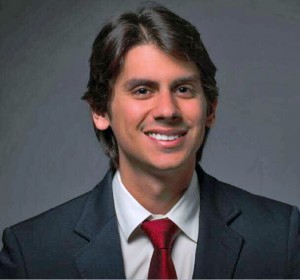Op-Ed: What is Puerto Rico selling?


Author Raúl A. Palacios is president of nonprofit organization ALPFA PR, which focuses on Latino business leadership development
Is our current political status limiting our economic potential? That was the controversial question that was asked during last year’s ALPFA Puerto Rico’s marquee event, when a panel of five senior executives from the corporate, nonprofit and entrepreneurial sectors answered questions about our island’s most pressing problem: How to stop the infamous “brain drain.”
It was at that very moment when one of the panelists, CPA Raul Rosario, founder and owner of Droguería Betances, stood up from his chair in front of a public of more than 100 young professionals and vehemently replied: “Before I answer that question, let me ask you this, what are we selling?” “Do we even know?”
The silence that swept the room was deafening. But it completely opened my eyes. In a crowd of educated professionals — CPAs, lawyers, and other business professionals, no two answers were the same. “Tourism? “Financial Services? “Coffee?” were shouted from the crowd, but none were completely sure.
It is amazing to think that pharmaceuticals, to this day, is still our highest revenue driver, generating a little over 45 percent of our total GDP output. Even on the heels of the Census report that stated a 23 percent decline in manufacturing establishments and 4.5 percent decline in shipments between 2007-2012, the manufacturing sector has been our calling card ever since Luis Muñoz Marín took office back in the early 1950’s.
However, most of these established companies arrived via the establishment of tax incentives from Section 936, roughly 60 years ago. Paving the way for our gigantic economic boom as we shifted from an economy that was heavily dependent on agriculture to one of the biggest industrial hubs of that era.
Fast-forward to 2015 and it’s safe to say that we’ve been losing market share ever since these incentives expired in 2006, not coincidentally, the same year PR entered an almost decade-long recession. Combine this with the fact that our labor, along with utility costs, are higher than competing countries such as Singapore, Brazil, Mexico, China and India, and it is no surprise that manufacturing giants like Checkpoint and Abbott have recently left the island.
So what does this mean?
In means that we are in the midst of a defining era. An economic evolution if you will. It means that we as leaders must find ways to redefine our approach to economic development, which should be our biggest priority, not our current political status as Rosario stated during the Q&A.
Recently, Puerto Rico has gained national media recognition as a new age tax haven for service firms, both foreign and local, on the backs of Act 20 and Act 22.
Act 20 (known as the “Exports Services Act”) offers tax incentives such as a 4 percent flat rate on corporate income taxes and 100 percent tax exemption dividends derived from companies that are based in Puerto Rico and export their services. Act 22 (known as the “Individual Investors Act”) was designed primarily to attract high net worth investors to Puerto Rico by providing complete tax exceptions on dividends, interest and capital gains, so long as the individual is present for at least 183 days a year (half the year) in Puerto Rico.
Around 600 investors and entrepreneurs have already made the move, giving us a ray of sunshine to an otherwise gloomy economic outlook. Just this past March, another 400 potential investors arrived at our shores to learn more about these incentives during the 2nd Puerto Rico Investors Summit.
But will this be enough? Not exactly. It will take years before we see the long-term positive effects of these incentives. Nonetheless, they remain an effective and important tool to attract foreign investment to this island.
However, it is crucial that we nurture and support our nation’s biggest lifeblood: Our local talent. I’ve begun to witness an increased focus on fostering innovation and entrepreneurship as a real option for graduates. Given that the days when one went to college, graduated, got hired and went to work for 30+ years, only to count the days until retirement, seem so far gone.
Today, events like the H3 Conference as well as competition’s such as “Las Justas Empresariales” and Guayacan’s “Enterprize” are just examples of an increased focus on fostering and mentoring our talent towards creating and building local businesses. Just this past year, Global Shapers partnered with ALPFA to create the “Launchpad” initiative, which helped in orienting both students and young professionals on the vast amount of tools available at their disposal to launch their own companies.
This year, as a follow up, we are already planning to co-host “Cenas Empresariales,” alongside other community leaders, to connect investors and entrepreneurs with young professionals and college students in a formal dinner setting. It’s initiatives like these that are taking an active role in developing our youth’s top talent to improve the entrepreneurial ecosystem, creating opportunities for all parties involved.
This sounds amazing! But can we do more?
Often when I talk to visitors or tourists, I find that most of them assume that Puerto Rico is a leader in the tourism industry. And even when the number of visitors (4 million to be exact) grew in 2014 compared to the prior year, it’s always tough to explain why Puerto Rico, a beautiful place with exotic beaches and amazing weather, is just capturing .08 percent of the global tourism sector as per the Foundation for Puerto Rico Founder Jon Borshow.
This is why organizations like FPR are working diligently to serve as catalysts to make Puerto Rico not just a place for vacationing, but for education, health, and a place to do and grow business.
In this day and age, when the Internet has connected us more than ever, we now have the opportunity to broadcast what makes us unique. Our vibrant culture, our artistic creativity, our music, our astonishing gastronomic experience, exotic places, beaches, and even more important, our people. We have everything in place to exponentially increase our less than desirable 6 percent GDP output from the tourism sector.
So can we turn it around?
Only time will tell, but I do believe it can be done! The Republic of Ireland faced similar challenging circumstances, with more than $103 billion in public debt, declining property values and migrating workers. However, they were able to negotiate a bailout package of more than $85 billion that was accompanied by austerity measures, while protecting their economic competitiveness, by offering a 12 percent corporate tax rate.
As of right now, Puerto Rico government officials are also challenging the “status-quo” via the Chapter 9 bill, which is pressing for the opportunity for Puerto Rico to go bankrupt. This “hot topic” will be the core focus of our upcoming panel discussion, on July 2nd, at the Caparra Country Club. This bill would allow the government to structurally organize its finances without placing further burden on our generation’s workforce. One that is dwindling by the day, given these challenging economic times.
This is why it is imperative that our government officials understand the importance of fostering local businesses, attracting foreign investment, improving the visitors economy, and finally, stimulating entrepreneurship. This is what we should be selling.
However, only by securing bi-partisan support will these initiatives be able to flourish. Sustainable economic development and job growth are the keys to our future. This should be our highest priority, given that only job growth and economic prosperity could reverse our massive “braindrain” and help turn Puerto Rico into the international powerhouse that it can become.
Does this mean that we don’t care about our political status?
Of course not! But as we say in PR, that’s a topic for another day.












